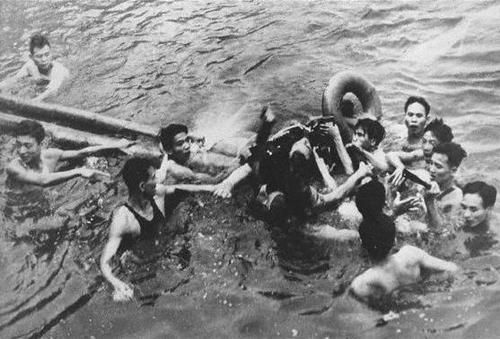Following its construction in 1902 the SS Eastland was discovered to have design flaws making it susceptible to listing. The ship was top-heavy with its centre of gravity being too high. This became evident when passengers congregated en masse on the upper decks. In July 1903, a case of overcrowding caused the Eastland to list with water flowing up one of the ship's gangplanks. The situation was quickly rectified but this was the first of many incidents. It listed again in 1906.
In 1915, the new federal Seamen's Act had been passed because of the RMS Titanic disaster three years earlier. The law required retrofitting of a complete set of lifeboats on the Eastland, as on many other passenger vessels. This additional weight, ironically, probably made the Eastland more dangerous as it worsened the already severe problem of being top-heavy. The Eastland was already so top-heavy that it had special restrictions concerning the number of passengers that could be carried.
As at 1915, the Eastland was a passenger ship based in Chicago and used for tours.
On the morning of 24 July 1915, whilst docked in Chicago on the Chicago River, pople began boarding the Eastland, quickly reaching capacity at 2,572 passengers. Many passengers stood on the open upper decks, causing the ship to list slightly to the port side (away from the wharf). The crew attempted to stabilise the ship by admitting water to its ballast tanks, but to little avail. Sometime in the next 15 minutes, a number of passengers rushed to the port side, and at 7:28, the Eastland lurched sharply to port, and then rolled completely onto its side, coming to rest on the river bottom, which was only 6 metres (20 feet) below the surface. Many other passengers had already moved below decks on this relatively cool and damp morning to warm up before the departure. Consequently, hundreds were trapped inside by the water and the sudden rollover; others were crushed by heavy furniture, including pianos, bookcases, and tables. Although the ship was only 6 metres from the wharf, and in spite of the quick response by the crew of a nearby vessel, the Kenosha, which came alongside the hull to allow those stranded on the capsized vessel to leap to safety, a total of 844 passengers and four crew members died in the disaster. It remains the largest loss of life from a single shipwreck on the Great Lakes.
Following the disaster, the Eastland was salvaged and sold to the United States Navy. After restorations and modifications the Eastland was designated as a gunboat and renamed the USS Wilmette. She was used primarily as a training vessel on the Great Lakes, and was scrapped following World War II.
View of Eastland from the south side of river after the accident
Passengers being rescued.
Diver and other rescue workers recover victim of Eastland disaster.
Small boats attempt to rescue survivors gathered on the exposed side of the excursion boat SS Eastland
______________________________
Al Capone’s cell
______________________________
Victoria Woodhull, the first woman to run for President of the United States.
Her running mate was Frederick Douglass, the first African-American to run for Vice President.
______________________________
The Annex occupied by Anne Frank, her family and four others. After living there for two years and one month, they were anonymously betrayed to the Nazi authorities, arrested, and deported to their deaths in concentration camps. Anne Frank’s father survived and later published her diary.
______________________________
Lieutenant Commander John McCain, photographed as he was forcibly dragged from the wreckage of his A-4E Seahawk after being shot down over Hanoi.
John McCain (1936 - ) followed his father and grandfather, both four-star admirals, into the United States Navy, becoming a naval aviator. In October 1967, while on a bombing mission over Hanoi, he was shot down, seriously injured, and captured by the North Vietnamese. He was a prisoner of war until 1973. McCain experienced episodes of torture, and refused an out-of-sequence early repatriation offer. His war wounds left him with lifelong physical limitations. He retired from the Navy as a captain in 1981 and moved to Arizona, where he entered politics. Elected to the U.S. House of Representatives in 1982, he served two terms, and was then elected to the U.S. Senate in 1986, winning re-election four times, most recently in 2010. McCain was the Republican candidate defeated by Obama in the 2008 Presidential election.
______________________________
Queen Elizabeth II inspecting sheep at Wagga Wagga on her 1954 Royal Tour.
Prime Minister Robert "British to my boot heels" Menzies delivers his cringeworthy homage to Queen Elizabeth 11 during her 1954 tour of Australia by quoting from Thomas Ford's poem There is a Lady Sweet and Kind, the words:
"I did but see her passing by
And yet I love her till I die."
















No comments:
Post a Comment
Note: Only a member of this blog may post a comment.